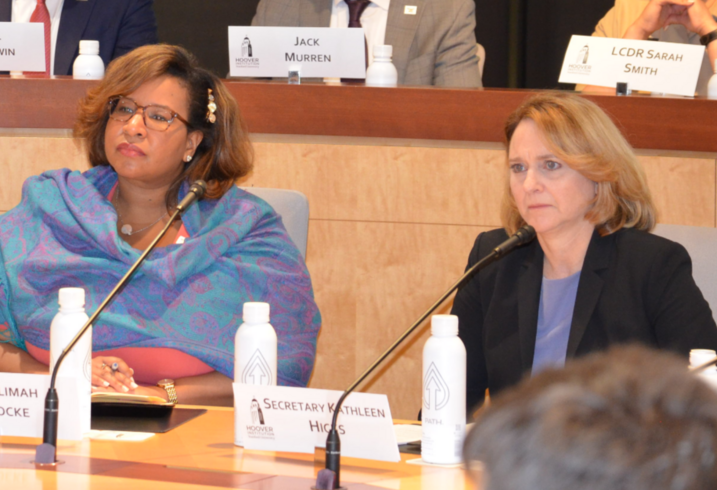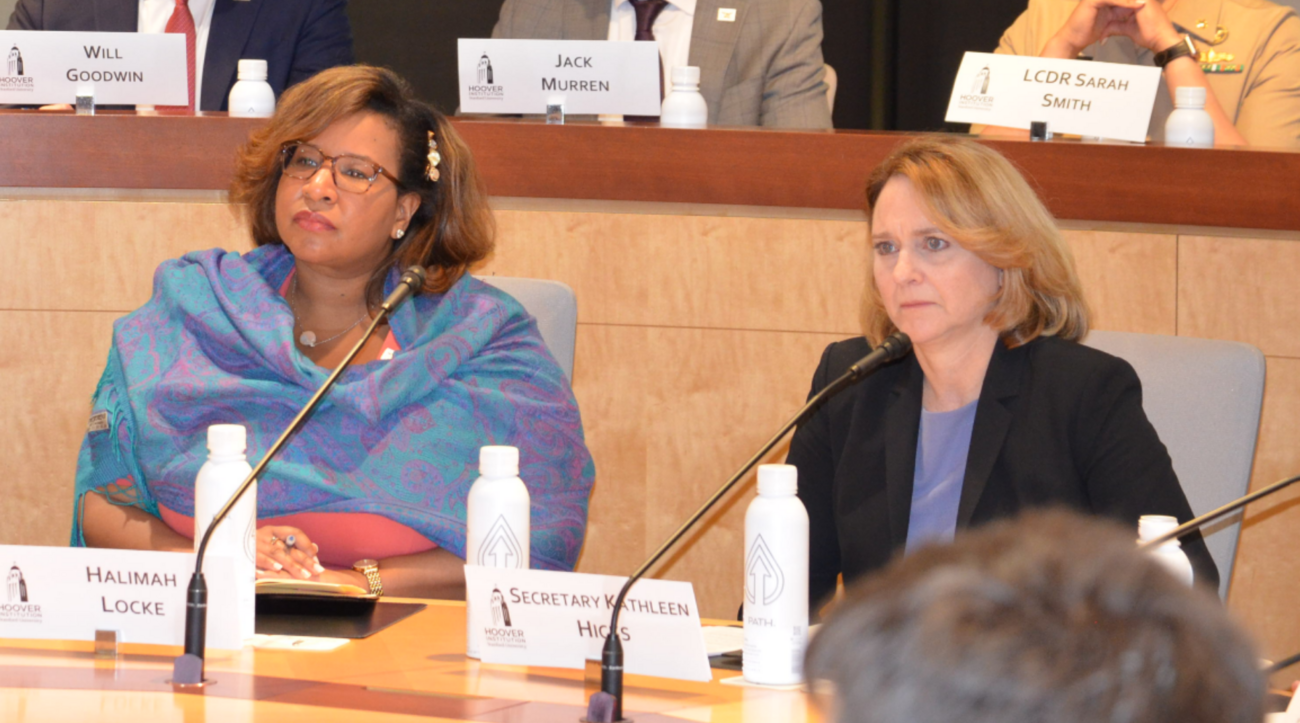Martha Crenshaw, senior fellow at the Freeman Spogli Institute for International Studies and professor, by courtesy, of political science, recommends:
Muslims in a Post-9/11 America: A Survey of Attitudes and Beliefs and Their Implications for U.S. National Security Policy
“I am recommending a book for late summer, to be published by University of Michigan Press in August. The author is Rachel Gillum, who recently received her PhD in political science from Stanford. It is the definitive account of who American Muslims are and what they think, a much-needed antidote to prejudice and misconception, and a clear warning about the unintended consequences of counterterrorism policies.”
François Diaz-Maurin, Nuclear Security Visiting Scholar and the European Commission’s Marie Sklodowska-Curie Fellow recommends one book for each month of summer:
The Plutonium Files: America's Secret Medical Experiments in the Cold War, by Eileen Welsome
“This book tells the harrowing story of the plutonium injections and other experiments conducted on U.S. citizens in the postwar era. It provides one of the best illustrations of how distrust in the government and fear about nuclear energy got firmly embedded in the minds of the American public; two of the main factors explaining today's difficulty to deal with the legacy of radioactive waste.”
The Doomsday Machine: Confessions of a Nuclear War Planner, by Daniel Ellsberg
“Ellsberg's memoirs on his early-career involvement in the US nuclear war planning come 45 years after he famously leaked the Pentagon Papers helping to end the Vietnam War in 1975. Although mainly based on now declassified documents that will be known from historians, the book shows to the general public the insanity of U.S. and Russian nuclear policies based on a permanent state of alert of their early warning systems, which risks to humanity could only be exacerbated by prospects of a new arms race.”
From Cold War to Hot Peace: An American Ambassador in Putin’s Russia, by Michael McFaul
“In this book mixing history, scholarship and memoirs, McFaul explains that after the Cold War, U.S.-Russia relations went from resetting relations aimed at more cooperation after the fall of the Soviet Union to a period of Hot Peace with the rise of Vladimir Putin. Deliberately echoing the past, McFaul argues that Hot Peace is no less dangerous than the Cold War because it brings new types of destabilizing factors, such as elections interference and military annexation, and calls for a bipartisan strategy to reset (again) the U.S.-Russia relations.”
Karl Eikenberry, Oksenberg-Rohlen Fellow at the Shorenstein Asia-Pacific Research Center,
CISAC, CDDRL, and TEC affiliate, and director of the U.S.-Asia Security Initiative at the Shorenstein Asia-Pacific Research Center recommends:
Sapiens, by Yuval Noah Harari
Rodney C. Ewing, Frank Stanton Professor in Nuclear Security and Co-Director, CISAC, recommends:
Hue 1968 - A Turning Point of the American War in Vietnam by Mark Bowden
This is a long, hard read, but I think it is appropriate reading on the 50th anniversary of the Tet Offensive.
Gabrielle Hecht, senior fellow at the Freeman Spogli Institute for International Studies, Frank Stanton Foundation Professor of Nuclear Security, and professor of history, recommends:
“Stephen Graham, Vertical: the City from Satellites to Bunkers. Most of us think about maps and spatial politics in two dimensions. This book invites readers to incorporate a third dimension into their thinking: verticality. Ranging from satellites, drones, and skyscrapers to sewers, mines, and tunnels, Graham upends our sense of how politics, geography, and urban spaces are entwined. A great read, sparkling with insight.”
Siegfried Hecker, senior fellow at the Freeman Spogli Institute for International Studies, emeritus, and research professor of management science and engineering, emeritus, recommends:
Geoff West's Scale: The Universal Laws of Life and Death in Organisms, Cities and Companies.
“He is a good friend - former Los Alamos physicist, now at the Santa Fe Institute.”
David Holloway, Raymond A. Spruance Professor of International History, a professor of political science, and Freeman Spogli Institute for International Studies senior fellow, recommends:
Svetlana Alexievich, Secondhand Time: The Last of the Soviets.
“This is based on interviews Alexievich did between 1991 and 2012 and it provides an incomparable insight into the Soviet Union and post-Soviet reality, on the basis of what has been called a “symphony of Russian voices." I found it compulsive reading and very moving. It is not not about policy, but it is very much about the impact of politics on individuals and on society. Alexievich won the Nobel Prize for Literature in 2015 but you shouldn’t let that put you off.”
Colin Kahl, Steven C. Házy Senior Fellow in the Freeman Spogli Institute for International Studies and Director of the Middle East Initiative recommends:
Paul Scharre, Army of None: Autonomous Weapons and the Future of War.
“Rapid technological advances in autonomous and semi-autonomous weapons systems and artificial intelligence will revolutionize the way humans fight. Yet security specialists are still in the early phases of thinking through the battlefield and ethical implications of these developments. This book, by a former Army Ranger, is a terrific starting point for that conversation.”
David Relman, Thomas C. and Joan M. Merigan Professor in the Departments of Medicine, and of Microbiology and Immunology, senior fellow at the Freeman Spogli Institute and Chief of Infectious Diseases at the Veterans Affairs Palo Alto Health Care System in Palo Alto, California recommends:
Thank You For Your Service, by David Finkel.
“After embedding himself with the 2nd Battalion, 16th Infantry during the 2007-2008 Surge in Iraq, Finkel, a Pulitzer Prize winning reporter and editor for the Washington Post, follows some of these soldiers after their return home to the U.S., and describes their painful struggles with the consequences of profound psychological trauma. His accounts are gripping, disturbing and for even the reader, life-changing. This book should be required reading for anyone who contributes to decisions about sending and subjecting people of any nation to war.”
Scott Sagan, Caroline S.G. Munro Professor of Political Science and senior fellow at the Freeman Spogli Institute, recommends:
S.C. Gwyne, Empire of the Summer Moon: Quanah Paker and Rise and Fall of the Commanches.
“Summer for me should include time away from the hustle and bustle of the city, to vacation in the wilds of the American West. Gwynne's book brilliantly captures the story of both Quanah Parker, the last independent chief of the Commanche, and his mother, Sarah Ann Parker, who was captured by raiding warriors as a young girl and then lived with the Commanche until captured a second time, by white relatives, after having raised a family with her Native American husband. This book, and the great John Wayne film, The Searchers, provides a summer window through which to glimpse dark elements of American history and culture.”
Amy Zegart, co-director of CISAC, senior fellow at the Hoover Institution, and professor of political economy (by courtesy) at the Stanford Graduate School of Business, recommends two books:
“Daniel Pink, When: The Scientific Secrets of Perfect Timing, which is chalk full of useful (and sometimes frightening) research about timing -- with implications for how to improve efficiency and outcomes in a wide array of activities, from when to get medical procedures to how to get the most out of a nap. In international security, it is easy to overlook the human dimensions of good decision-making. One of McGeorge Bundy's best decisions during the Cuban missile crisis was to let President Kennedy sleep before telling him about the U2 photos showing Soviet missile installations. Pink's book grounds this essential intuition in research.
“Tara Westover, Educated. A moving memoir about a young woman's journey from a survivalist family in Idaho to Cambridge University, where she earned a DPhil in History. Told with a sense of love and brutal honesty, the book provides a penetrating glimpse into segments of American society that are literally and figuratively off the grid and one woman's singular determination to make a different future for herself.”












